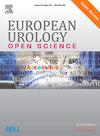AGREE II Quality Assessment of National and International Clinical Practice Guidelines on Prostate Cancer Management by the OPTIMA Consortium
IF 3.2
3区 医学
Q1 UROLOGY & NEPHROLOGY
引用次数: 0
Abstract
Background and objective
Clinical practice guidelines for prostate cancer (PCa) are a valuable resource for everyday clinical practice. The clinical practice guidelines and recommendations produced by various societies should demonstrate a considerable level of consistency in terms of quality, regardless of the society that developed these given the common evidence base. However, to date, no study has assessed the quality of PCa clinical practice guidelines. As part of the Optimal Treatment for Patients with Solid Tumours in Europe Through Artificial intelligence (OPTIMA) project, we evaluated the quality of the most frequently used national and international clinical practice guidelines for PCa using the Appraisal of Guidelines for Research & Evaluation II (AGREE II) tool.
Methods
The quality of the identified clinical practice guidelines was assessed independently by two assessors using the AGREE II tool. The AGREE II tool comprises 23 different items organised into six domains, rated on a 7-point scale (1: strongly disagree to 7: strongly agree). The total score of the appraisal was the mean value of the two assessments. The agreement between assessors’ scores was calculated using the interclass correlation coefficient (ICC). Four key recommendations were compared among the included clinical practice guidelines to assess consistency.
Key findings and limitations
Sixteen clinical practice guidelines were assessed using their latest available version (cut-off April 2024). The European Association of Urology, S3LL PCa, Belgian Health Care Knowledge Centre, National Comprehensive Cancer Network, and Prostatacancer—Nationellt vårdprogram guidelines received the highest overall scores with a mean domain score of 82.4% (range: 75.5–88.3%). The de l’Association Française d’Urologie (AFU), American Urological Association, and National Institute for Health and Care Excellence received a mean domain score of 77.6% (range: 73.7–84.0%). Below average were the European Society for Medical Oncology, localised (L) and systemic (S) CPPC American Society of Clinical Oncology, and Nederlandse Vereniging voor Urologie (NVU) with a mean domain score of 58.4% (range: 43.5–76.3%). The reasons for scoring below average included the following: inadequate information about the methodology applied, limited scope of the guideline, and limited patient engagement. The highest inter-rater variability was observed in NVU (ICC: 0.58) and the lowest in AFU-L (ICC: 0.84). When examining the scores of each domain, “clarity of presentation” (domain 4) achieved the highest score with a mean of 86.9% ± 12.6%. The domain with the lowest score was applicability (domain 5), with a mean of 48.3% ± 24.8%. The ICC was calculated to be 0.72 (±0.08).
Conclusions and clinical implications
This is the first study in which a comprehensive quality assessment of the majority of international and national clinical practice guidelines was undertaken, and the key recommendations were compared to assess consistency. Our study shows that the majority of international and national clinical practice guidelines demonstrate high-quality standards when assessed using the AGREE II evaluation tool. The clinical practice guidelines that did not meet the expected standards could be improved by adopting several key recommendations outlined by our study.
Patient summary
The OPTIMA project used the Appraisal of Guidelines for Research & Evaluation II (AGREE II) tool to evaluate the quality of 16 commonly used national and international clinical practice guidelines for prostate cancer. While some of these international and national clinical practice guidelines received the highest score, few guidelines scored below average due to methodological deficiencies and limited patient engagement. These findings highlight the need for a standardised process to ensure high-quality, consistent guidelines across practices.
AGREE II:OPTIMA 联合会对国内外前列腺癌治疗临床实践指南的质量评估
背景和目的 前列腺癌(PCa)临床实践指南是日常临床实践的宝贵资源。鉴于存在共同的证据基础,无论哪个学会制定的临床实践指南和建议在质量方面都应表现出相当程度的一致性。然而,迄今为止还没有研究对 PCa 临床实践指南的质量进行评估。作为 "通过人工智能优化欧洲实体瘤患者治疗"(OPTIMA)项目的一部分,我们使用 "研究与amp; 评估指南评估 II"(AGREE II)工具评估了最常用的国内外 PCa 临床实践指南的质量。AGREE II 工具由 23 个不同的项目组成,分为六个领域,按 7 分制评分(1 分:非常不同意,7 分:非常同意)。评估总分是两次评估的平均值。使用类间相关系数(ICC)计算评估者评分之间的一致性。对纳入的临床实践指南中的四项关键建议进行了比较,以评估其一致性。主要发现和局限性16项临床实践指南均采用最新版本(截止日期为2024年4月)进行评估。欧洲泌尿学协会、S3LL PCa、比利时医疗保健知识中心、国家综合癌症网络和前列腺癌-Nationellt vårdprogram指南的总得分最高,平均领域得分率为82.4%(范围:75.5-88.3%)。法国泌尿协会 (AFU)、美国泌尿协会和美国国家健康与护理卓越研究所的平均领域得分率为 77.6%(范围:73.7-84.0%)。低于平均水平的是欧洲肿瘤内科学会、局部性(L)和系统性(S)CPPC 美国临床肿瘤学会和荷兰泌尿学会(NVU),其平均领域得分率为 58.4%(范围:43.5-76.3%)。得分低于平均分的原因包括:所采用方法的信息不足、指南范围有限以及患者参与度有限。评分者之间差异最大的是 NVU(ICC:0.58),最低的是 AFU-L(ICC:0.84)。在检查每个领域的得分时,"表述清晰度"(领域 4)得分最高,平均为 86.9% ± 12.6%。得分最低的领域是适用性(领域 5),平均得分为 48.3% ± 24.8%。经计算,ICC 为 0.72 (±0.08)。结论和临床意义这是首次对大多数国际和国家临床实践指南进行全面质量评估的研究,并对主要建议进行比较以评估一致性。我们的研究表明,在使用 AGREE II 评估工具进行评估时,大多数国际和国家临床实践指南都达到了高质量标准。对于未达到预期标准的临床实践指南,可以通过采纳我们的研究中提出的几项关键建议来加以改进。患者摘要 OPTIMA 项目使用研究与amp; 评估指南评估 II (AGREE II) 工具评估了 16 项常用的国内外前列腺癌临床实践指南的质量。虽然其中一些国际和国内临床实践指南获得了最高分,但由于方法上的缺陷和患者参与度有限,得分低于平均分的指南为数不多。这些发现凸显了标准化流程的必要性,以确保各临床实践指南的高质量和一致性。
本文章由计算机程序翻译,如有差异,请以英文原文为准。
求助全文
约1分钟内获得全文
求助全文
来源期刊

European Urology Open Science
UROLOGY & NEPHROLOGY-
CiteScore
3.40
自引率
4.00%
发文量
1183
审稿时长
49 days
 求助内容:
求助内容: 应助结果提醒方式:
应助结果提醒方式:


